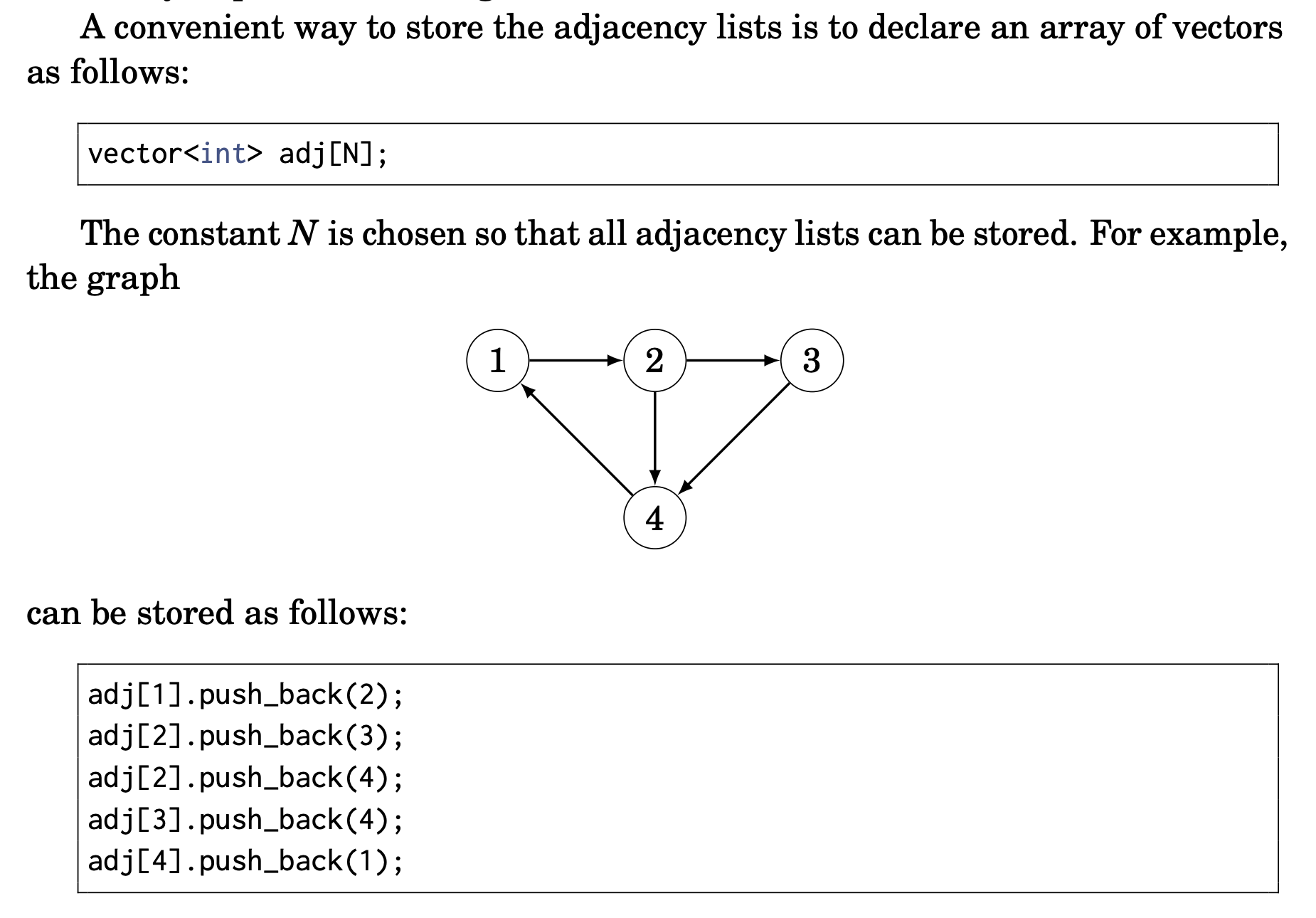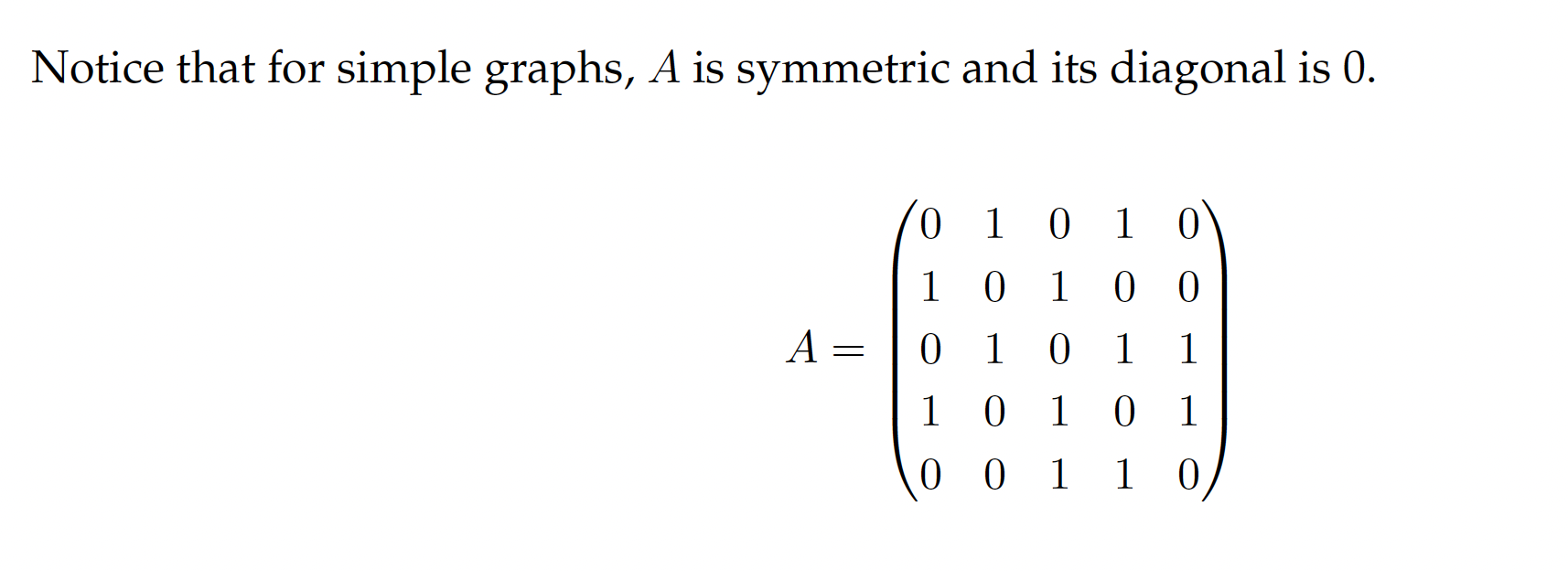Graph Representation
3 popular ways to implement:
- Adjacency list representation (most popular)
- Adjacency matrix representation
- Edge list representation
Adjacency List Representation
Use an array of vectors.
vector<int> adj[N];The indices of the array represent the node number, while the actual value of the array are vectors of the other nodes that the current node is connected to.

For a weighted graph, the structure can be extended by using vectors of pairs:
vector<pair<int, int>> adj[N];With adjacency lists is that we can efficiently find the nodes to which we can move from a given node through an edge. Ex:
for (auto u : adj[s]) {
// process node u
}Adjacency Matrix Representation
An adjacency matrix is a two-dimensional array that indicates which edges the graph contains.
int adj[N][N];Each value adj[a][b] indicates whether the graph contains an edge from node a to node b
adj[a][b] = 1if there is an edgeadj[a][b] = 0if no edges
If weighted, use the value of the weight instead of 1 when storing the edge value.
Edge List Representation
vector<pair<int,int>> edges;
edges.push_back({1,2});
edges.push_back({2,3});
edges.push_back({2,4}); For Weighted edges, add a 3rd value for each edge representing edge weight.
vector<tuple<int, int, int>> edges;
edges.push_back({1,2,5});
edges.push_back({2,3,1});
edges.push_back({2,4,1}); MATH239
Below is some more formal notation as I saw in MATH239.
Adjacency Matrix
The adjacency matrix of a graph with vertices is the matrix where
Incidence Matrix
The incidence matrix of a graph with vertices and edges is the matrix where

